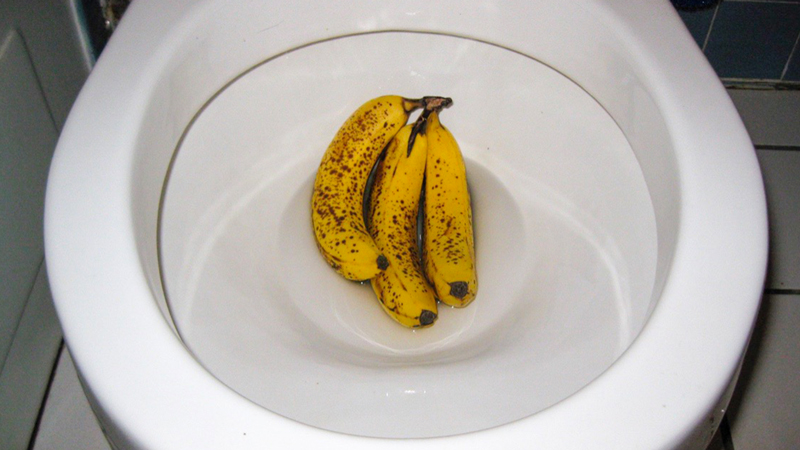Just how do you really feel with regards to Think Twice Before Flushing Food Down Your Toilet?

Introduction
Many people are frequently faced with the dilemma of what to do with food waste, especially when it concerns leftovers or scraps. One usual inquiry that arises is whether it's alright to purge food down the bathroom. In this write-up, we'll look into the reasons why people could consider purging food, the repercussions of doing so, and different approaches for correct disposal.
Reasons why individuals could consider flushing food
Lack of awareness
Some people might not be aware of the potential harm triggered by purging food down the commode. They may mistakenly think that it's a safe technique.
Convenience
Purging food down the commode might look like a fast and simple option to getting rid of unwanted scraps, especially when there's no close-by trash bin offered.
Negligence
In many cases, individuals may simply pick to flush food out of large laziness, without considering the effects of their activities.
Consequences of flushing food down the commode
Environmental impact
Food waste that ends up in rivers can add to air pollution and damage aquatic ecological communities. Additionally, the water made use of to purge food can stress water resources.
Plumbing problems
Flushing food can bring about blocked pipelines and drains pipes, triggering pricey plumbing repairs and inconveniences.
Sorts of food that must not be purged
Coarse foods
Foods with fibrous structures such as celery or corn husks can obtain tangled in pipes and create obstructions.
Starchy foods
Starchy foods like pasta and rice can soak up water and swell, bring about obstructions in pipelines.
Oils and fats
Greasy foods like bacon or food preparation oils ought to never ever be flushed down the bathroom as they can strengthen and trigger obstructions.
Appropriate disposal techniques for food waste
Utilizing a garbage disposal
For homes outfitted with waste disposal unit, food scraps can be ground up and purged through the plumbing system. Nevertheless, not all foods are suitable for disposal in this way.
Recycling
Particular food packaging materials can be recycled, minimizing waste and minimizing environmental influence.
Composting
Composting is a green way to dispose of food waste. Organic materials can be composted and utilized to enhance soil for horticulture.
The importance of proper waste monitoring
Decreasing environmental harm
Proper waste administration methods, such as composting and recycling, aid lessen pollution and maintain natural deposits for future generations.
Shielding pipes systems
By preventing the practice of flushing food down the toilet, house owners can stop expensive pipes repair services and maintain the integrity of their pipes systems.
Conclusion
In conclusion, while it might be tempting to purge food down the commode for comfort, it is essential to recognize the prospective effects of this action. By embracing correct waste monitoring practices and taking care of food waste properly, people can contribute to much healthier plumbing systems and a cleaner environment for all.
FLUSH FOOD DOWN THE TOILET?
FLUSHING FOOD CAN CAUSE BLOCKED DRAINS IN YOUR HOME
All of the plumbing fixtures in your home are connected to the same sewer pipe outside of your home. This outdoor sewer pipe is responsible for transporting all the wastewater from your home to the Council sewer mains. Even small pieces of food that go down the kitchen sink can cause problems for your sewer. It should therefore be obvious that flushing larger bits of food, such as meat, risks a clog in either the toilet itself or the sewer pipes. Flushing greasy food is even more problematic because oil coagulates when it cools, coating the interior lining of your pipes.
THE TOILET IS NOT A BIN
Food isn’t the only thing that people shouldn’t be flushing down the toilet. People use the toilet to dispose of all kinds of things such as tampons, makeup wipes, dental floss, kitty litter and even underwear. Water goes to great lengths to educate residents about the high costs and stress placed on wastewater treatment systems simply from people flushing the wrong stuff down the toilet. It costs taxpayers millions of dollars each year, and homeowners thousands in blocked drain repairs.
FLUSHING FOOD IS A WASTE OF WATER
Flushing food is a waste of our most precious resource - water. In June this year Level 1 water restrictions were introduced to protect water supply from drought conditions. Much of New South Wales continues to be affected by prolonged drought with recent figures revealing up to 97 per cent of the state remains in drought. Depending on whether you have a single or dual flush toilet, every single flush uses between five and 11 litres of water. In the current climate this is a huge amount of water to be wasting on flushing food that should be placed in the bin (or better yet, the compost).
https://www.jabplumbingsolutions.com.au/blog/can-you-flush-food-down-the-toilet

I'm certainly very interested by Is it safe to flush food (especially rice) down the toilet? and I hope you enjoyed reading my blog entry. Sharing is good. Helping others is fun. Thank you so much for taking the time to read it.
Estimating